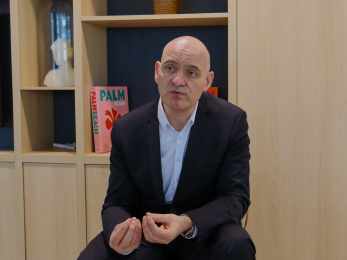Everyone knows the fable of the Fountain “The cicada and the ant”. Everyone hears about the importance of being Data Driven or Data Centric. But what is the difference? It’s not so obvious. But let’s see how the fable of the Fountain will help us.
Should you be Data Centric or Data Driven?
Today, all strategy consulting firms tell you that “you have to be data-centric”. And in fact, companies are accumulating lots and lots of data, and using algorithms to interpret it and better manage their business. These companies are called Data Driven.
But being Data Driven is not the same thing as being Data Centric. A Data Centric organization places its data at the heart of its organization and considers it a key asset. You can be Data Driven without being Data Centric, but not the other way around. And the difference translates into significant technical debt and a considerable delay in the delivery of use cases.
So because it’s not that simple, to explain it to you, we’re going to go back to the famous fable of Jean De La Fontaine “the cicada and the ant”.
We celebrate this year the 400th anniversary of the birth of the poet. The cicada and the ant is the first fable of the first book of La Fontaine, just as the data strategy must be the first concern of your company.
What is the fable about?

During the summer, an ant starts to stock up for the next winter. A cicada, who spends his time singing, sees her and laughs at her. But the winter cold arrives and the cicada finds herself without provisions, without “a single piece of fly or worm“. She then asks the ant for help. The fable ends with this fall where the ant answers the cicada: “You were singing? I am very comfortable: Well! dance now! “.
How to understand this fable and how does it relate to data?
First of all, it’s a business story. It’s about payment, loan, borrowing, new season. The 17th century saw the arrival of Colbert’s mercantilism, just as the 21st century saw the arrival of a data-driven economy and the arrival of distributed architectures that have turned the market upside down. The ant represents here the rational spirit of progress, facing the baroque spirit of the cicada.
The first moral of the story is that you have to work to survive and that you can only rely on yourself. The ant is clearly DATA CENTRIC and the cicada has not understood anything.
The second moral, more subtle, asks the following question: should we be like the ant, far-sighted and thrifty, but at the same time selfish and cold? Or to be like the idle cicada, but generous with her song that benefits everyone and comfortable with change?
- The ant is the stereotype of planning, foresight, measurement, and storage. It accumulates goods, stores them in a large warehouse and reuses them when needed. We can therefore compare the ant to datalake IS architectures, where we pour all the data into a warehouse without distinction of type and where we create specific business rules for the request, according to a customer request. For each business request on the data, there is a specific rule. This is the “Data Driven” architecture.
- On the other side, the cicada, carefree, distributes its art to everyone “night and day I sang” looking for some grain to subsist until the new season. A cicada so confident, that it already knows that it will reproduce the same scenario the following year. The cicada is like the business applications that are constantly asking for use cases to better approach the market: 360° customer vision, yield prediction, improved stock management, better marketing targeting, etc… It wants quick use cases. It is also “Data Driven”.

So do you have to be a Cicada or an Ant?
But the two visions do not work together. You can’t deliver use cases quickly and not create technical debt at the same time. Our belief at JEMS, perhaps like John of the Fountain, is that you have to be both. You have to be generous and good-natured like the grasshopper but also foresighted and thrifty like the ant.
In any data strategy, you have to be able to :
- Use data to drive the business, be Data Driven
- Putting data at the heart of the company, in order to generate use cases quickly and without creating technical debt.And only the Data Centric model can do this.
Matthieu LENTZ – JEMS CMO






